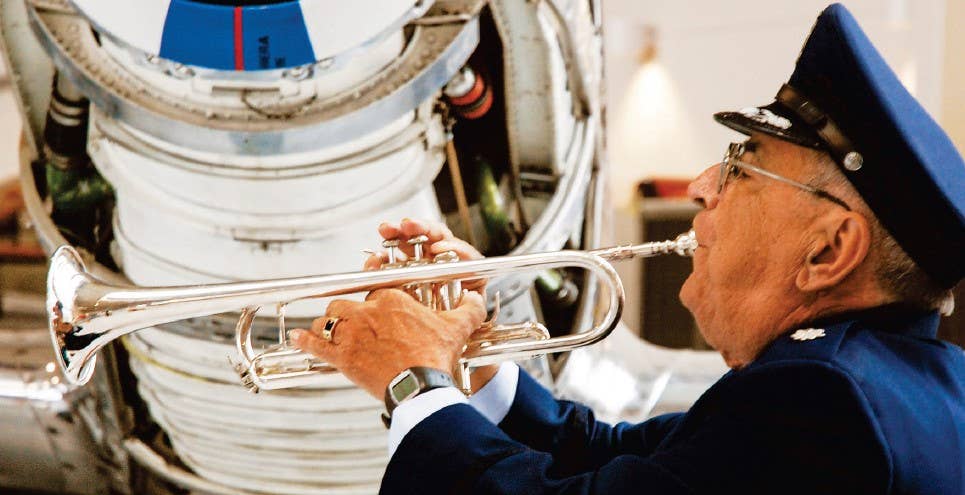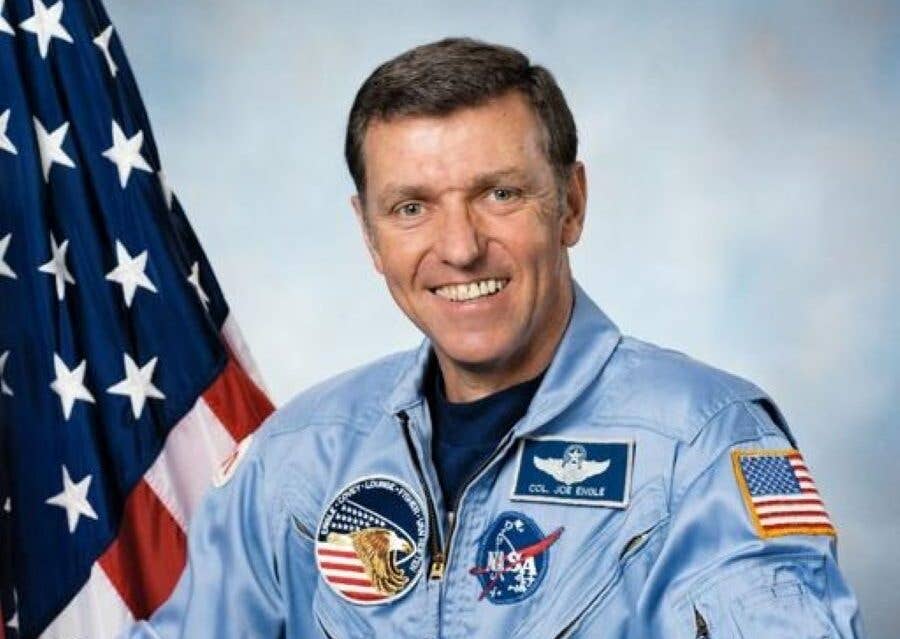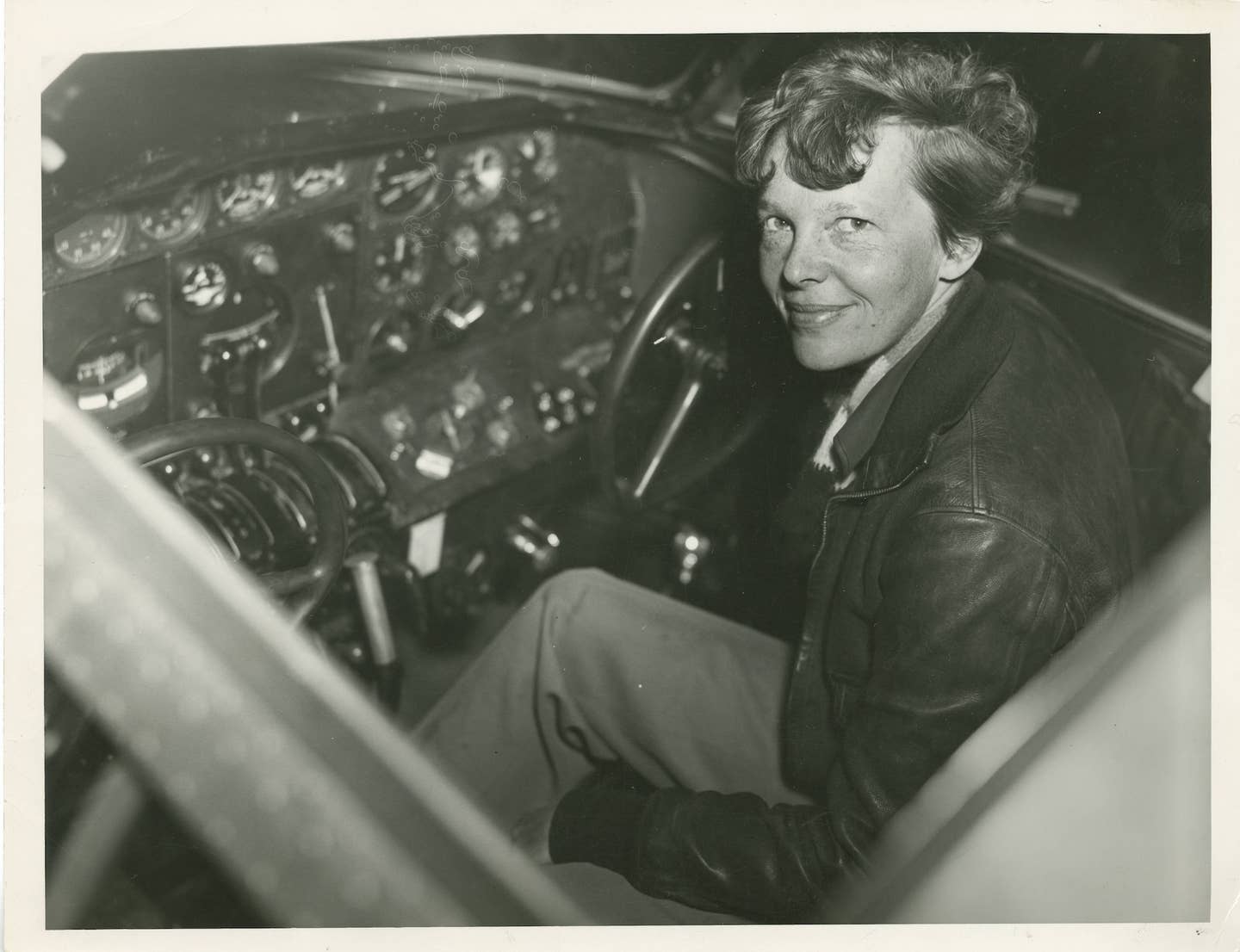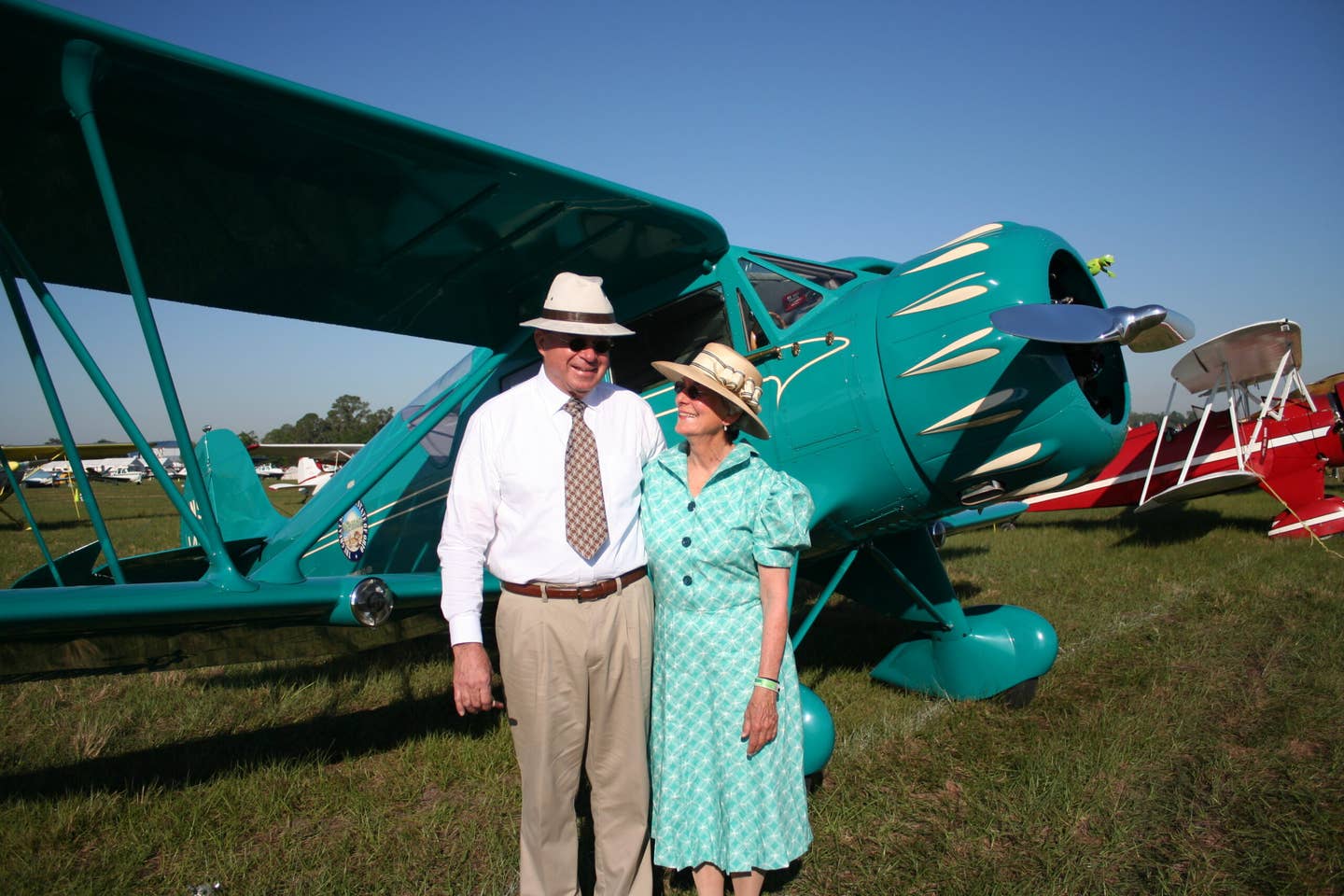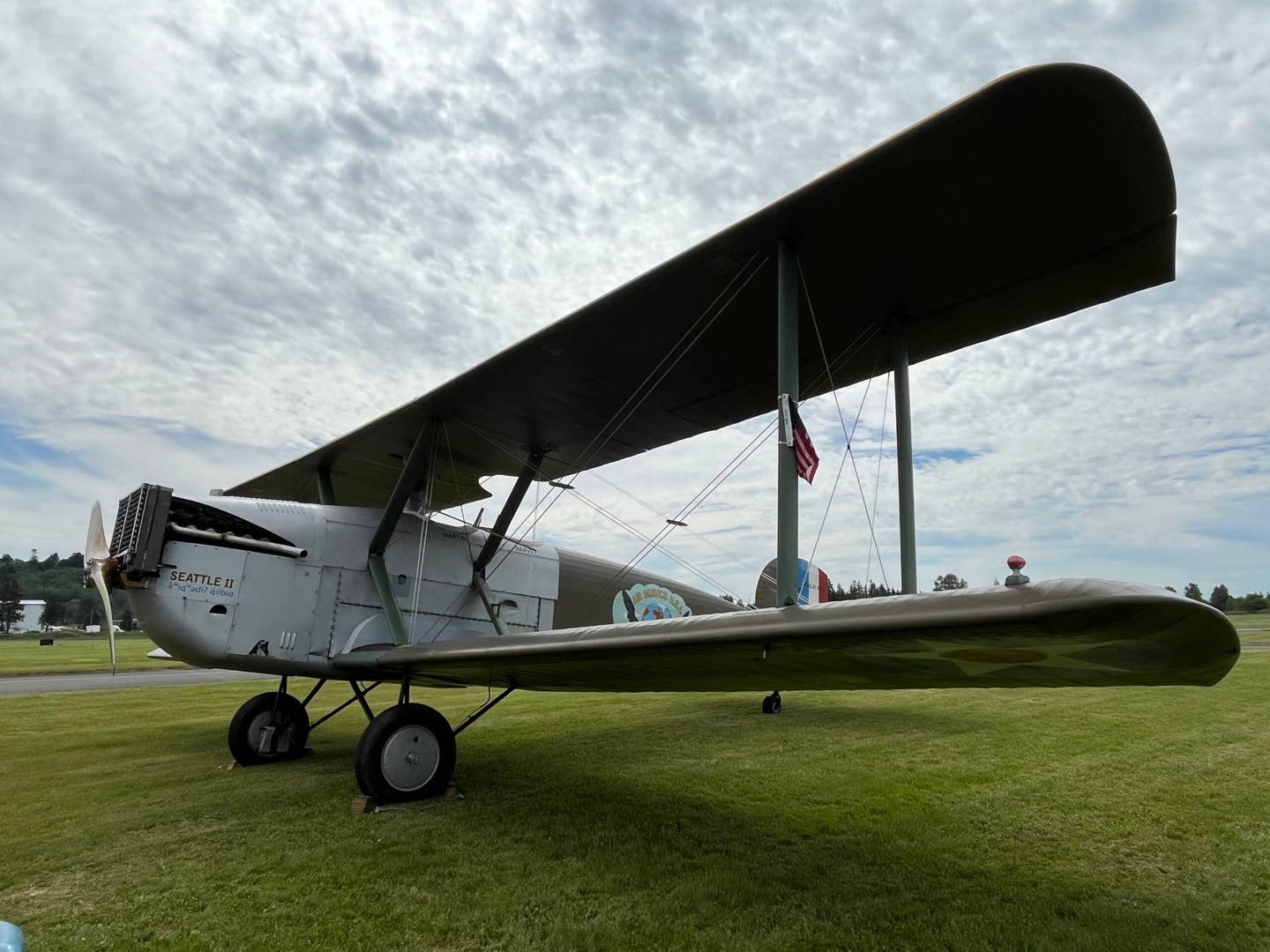‘Masters of the Air’ Miniseries Is Must-See TV for Aviation Buffs
Apple streaming show, based on the 2007 book, chronicles the heroics of World War II B-17 missions.

Masters of the Air follows the Eighth Air Force’s 100th Bomb Group during World War II. [Courtesy: National Archives and Records Administration]
Unless you have been living under a rock for the past month, you have probably heard about Masters of the Air, the miniseries streaming on Apple TV. This much-anticipated World War II drama premiered on January 26.
For history and aviation buffs, this is must-see programming. The series, based on the 2007 book of the same name by Donald L. Miller, chronicles the experiences of the 100th Bomb Group, part of the Eighth Air Force in England during the war. For those who swoon at the sight and sound of a Boeing B-17, this is something you will want to watch. Several times.
The series is touted as a companion piece to HBO’s Band of Brothers and The Pacific. All three of these gritty war dramas were produced by Steven Spielberg and Tom Hanks.
The miniseries was several years in discussion, and when the green light was given, there was no shortage of aviation and WWII historians who wanted to be part of the project. One of those was Taigh Ramey, well known in the American warbird circuit for his Twin Beech restoration, maintenance facility, and role at the Stockton Field Aviation Museum and WWII Bomber Camp in California.
Ramey's mother was an Army nurse in WWII, and his father a navigator aboard a B-29. As a child, he built model aircraft with his dad and collected aircraft instruments. One year for Christmas, Ramey received a Crocker-Wheeler A-8 gun turret.
"It was new in the original crate from 1943,” Ramey said. “The like-new Plexiglas dome had a protective cover over it that was stenciled ‘TRAINING TURRET TYPE A-8 FOR MODEL AT-11 AIRCRAFT.’ It was so cool, and I asked my dad what an AT-11 was. He showed me a photo and said that he and a buddy took an AT-11 out of Saipan in 1945 and buzzed the Japanese in the control tower on the island of Rota, making them jump out! Combat use of an AT-11!"
The AT-11 is a military variant of the Twin Beech, and Ramey became familiar with the civilian aircraft while studying aeronautics at San Jose State University. He discovered a patch-and-rivet pattern on one of the aircraft in the school program that indicated it had been used by the military as a bombardier trainer. That fueled his desire to get an AT-11 of his own. He learned SJSU was planning to discard the aircraft, and if he wanted it as a project, it would cost $250 for the airframe—engines not included. He borrowed the money from his mother and became the proud owner of a 1943 Beechcraft AT-11 Kansan bombardier trainer.
Fast-forward a few decades. Ramey, now a 5,000-hour commercial pilot with multiengine, CFI, MEI, and A&P/IA certificates, learns the Masters of the Air project is moving forward—and knew he wanted to be part of it.
"I emailed as many folks as possible to try and get involved,” he said. “I am sure about 10,000 others did as well. It turned out that it was Bomber Camp that got me the job."
The idea for Bomber Camp started as a paper Ramey wrote in college. It has since evolved into an educational camp for adults where they learn all about WWII air and ground crew by living the experience. They dress in WWII-authentic clothing and learn about the jobs of the men during the war. They have the opportunity to fly on a B-17G for a simulated mission with dummy bombs.
"The students get to shoot the 50-cal machine gun and get to drop bombs with the famous Norden bombsight,” Ramey said. “You can even ride in a ball turret in flight and all of the other crew positions in the B-17."
People who knew about Bomber Camp suggested Ramey to the movie’s production staff as a technical adviser on the series, and soon he received a call asking if he would like to come out for two weeks to train pilots to act like they could fly a B-17.
Although he does not have a type rating in a B-17, Ramey does have type ratings in other WWII aircraft and had flown right seat in the Collings Foundation's 909.
A week later Ramey was in the U.K. as a WWII aviation adviser/B-17 technical adviser on the project. His job was to work with the actors portraying the flight crews as well as assisting the production department to make sure the on-screen action appeared authentic. For example, he made sure the actors were looking at the correct gauges on the instrument panel at a specific moment, such as when an engine is damaged in flight and they commented on a loss of power.
"After the two weeks were up, I was packing to go home and I talked to production about my upcoming flight," Ramey said. "They said, ‘Oh, didn’t they tell you? You are staying for the filming.’ Uh, no. Nobody asked me if I could stay. Of course, I stayed and I was there for the full nine months of filming."
Ramey's work on the Masters of the Air project broadened. He went to the National Archives and Records Administration to research each mission to gain a better understanding of what it took to make it happen, then worked with Meghan Jones in the graphics department on the flight planning. The maps and plotting of courses shown in the movie are correct, he said.
"The production staff were so determined to make this as accurate as possible," Ramey said. "The amount of effort that went into this series is beyond amazing."
He was also tasked with teaching the actors how to handle the aircraft controls as if they were actually flying.
"I assumed that some of the actors would have a basic understanding of flying, maybe through flight simulators, gaming, or something," Ramey said. "Not a single one had any prior experience. So I sat them down in a chair and had them hold a control wheel and make a turn with their hands and feet, telling them the basics of how the controls work. [How] to turn, roll in the rudder and aileron, and then add some back pressure. They needed to know…you can’t just hold the wheel over the full time like in your car, but you [have] to center the controls."
No real B-17s were used in the filming, according to Ramey. Instead, two full-sized B-17 replicas were constructed, one of which was able to move with large electric motors on each main landing gear.
Ramey instructed the actors about how to handle the throttles and other controls, where to look when flying formation, and how the crew interacts in flight, such as teaching the copilot how to back up the pilot and how the flight engineer/top turret gunner stood between the pilots on takeoff.
“[I also taught the gunners] how to work the Browning M2 50 cal and how to track the fighters and how long the burst of fire would typically be,” he said. “The bombardier needed to learn how to manipulate the awkward controls of the Norden bombsight in an accurate manner to manipulate his bomb bay door and bomb release controls and to interact with the pilot on the bomb run."
Briton David Littleton also served as a technical adviser. Littleton had worked as an adviser and on the aircrew for the 1990 film Memphis Belle.
"I was on the flight crew for the B-17 Sally B and was tasked with firing the guns during filming from Duxford and later at Binbrook," Littleton said.
He also worked on 2012’s Red Tails, directed by George Lucas, employed by the art department to oversee the build and kitting out of the B-17 section that was made. Littleton has a B-17 cockpit that was used for the close-up shots. On Masters of the Air the production manager contacted him about coming to see his B-17. According to Littleton, the producers used his cockpit as a template to construct sets for filming.
"My cockpit was shipped to Longcross Studios as a reference to the team to build the B-17,” he said. “I supplied many parts for the team to model and make replicas. The interior sets were visually complete from the nose to the tail for filming. These were started a year before filming commenced."
Littleton said he also provided smaller items, such as machine gun mounts that were reproduced by the props department. His cockpit was used to train the pilots, copilots, and flight engineers.
"Myself and Taigh Ramey worked with Captain Dale Dye to assist with the extras and other actors for other crew roles,” Littleton said. “We were on hand to assist the directors on various B-17 scenes that were to be filmed."
If you have been inside a B-17, you know how cramped it is. This was noted during the filming, as the crew were aboard B-17F, where the waist gunner windows are located directly across from each other. During combat the gunners would often slam into each other. Later-model B-17s staggered the gunners’ positions so this didn't happen.
The combat scenes for Masters of the Air were handled using CGI. Based on recorded accounts of those who were there, the images are historically authentic. You can't help but flinch when the German fighters come at the aircraft and parts of it are blown inward from antiaircraft gun flak.
The detail inside the bomber is impressive. You see all the headset and microphone cords, the piles of bullet casings on the floor, and the oxygen hoses and electrical cords for the heated flying suits hanging from a bulkhead or sheared off by flak. Add to this the physiological challenge of being at 20,000 feet, where the temperature is 40 below zero. There are several scenes where the airmen experience frostbite because of the below-freezing temperatures at altitude and hypoxia when their oxygen masks are knocked loose by flak or the hoses torn.
There is a gritty reality to this series that has not appeared in others. Littleton notes he has heard from a few veterans that watching Masters of the Air is a very emotional experience for them.
Like Ramey, Littleton was impressed by the production department's attention to detail right down to the sounds of the B-17 starting up with the hydraulic pumps to the tiny details of life in the 1940s.
"The production team [was] very good to understand what was required, and a lot of research was carried out,” said Littleton, noting that the sets built at Abingdon Airfield and Mapledurham, and Chalfont Saint Giles were extremely detailed. “Everyone wanted to make sure everything was as correct as it could be. There was so much that was reproduced to make sure it was period correct that a lot was not even seen on the screen, even down to boxes of period matches and chewing gum."
The COVID-19 pandemic slowed down production. Masks were worn, and if someone on the movie crew tested positive for the virus, filming ground to a halt. This added several weeks to the production schedule.
Both Ramey and Littleton hope the viewers of Masters of the Air will gain perspective on the experiences of the airmen and how it shaped their lives after the war.
For example, a friend of mine's father was a waist gunner on a B-17 shot down in 1944. He was 19 years old at the time. He bailed out and survived, was taken prisoner, and placed in Stalag Luft III—three days after the so-called “Great Escape,” where 76 allied airmen broke out using a tunnel. The Germans were embarrassed by the escape, and the men left in the camp paid the price. He survived the war and was repatriated, but as a result of his experiences, he would become very agitated when there was a power outage, especially in the winter. The family took care to have extra food and an emergency heat source in the house.
What makes Masters of the Air even more poignant is that the generation that fought in WWII has all but disappeared—and most took their stories with them. It's only years later that their children and grandchildren or someone at a flea market finds their diaries or letters home.
While the rivet counters may find fault in some aspects of Masters of the Air, it still provides a window into that global conflict and a reminder of those who served.
New episodes of Masters of the Air are released on Fridays on Apple TV.
Longtime Passion for WWII Period Evident in Steven Spielberg
Masters of the Air director Steven Spielberg's father served on a B-25 during World War II, and he has always had a fascination for the period.
For the true Spielberg fans out there, you may recall his 1980s TV science fiction anthology series Amazing Stories that featured an episode called “The Mission,” where the ball turret gunner of the B-17 Friendly Persuasion is trapped in his compartment when a German fighter collides with the aircraft. In addition, the B-17's landing gear fails. The crew realizes they will be doing a belly landing and the ball turret – and the man inside – will be crushed.
The ball turret gunner is an aspiring cartoonist. He draws under pressure, and when he realizes the magnitude of his situation, he draws a cartoon of a B-17 with balloon tires—and they magically come to be. This was made possible by using the same production techniques for the 1988 feature film Who Framed Roger Rabbit? The cartoon tires remain in place while the turret gunner is rescued. He is in a daze, and when he comes out of it, the tires disappear.

Subscribe to Our Newsletter
Get the latest FLYING stories delivered directly to your inbox

